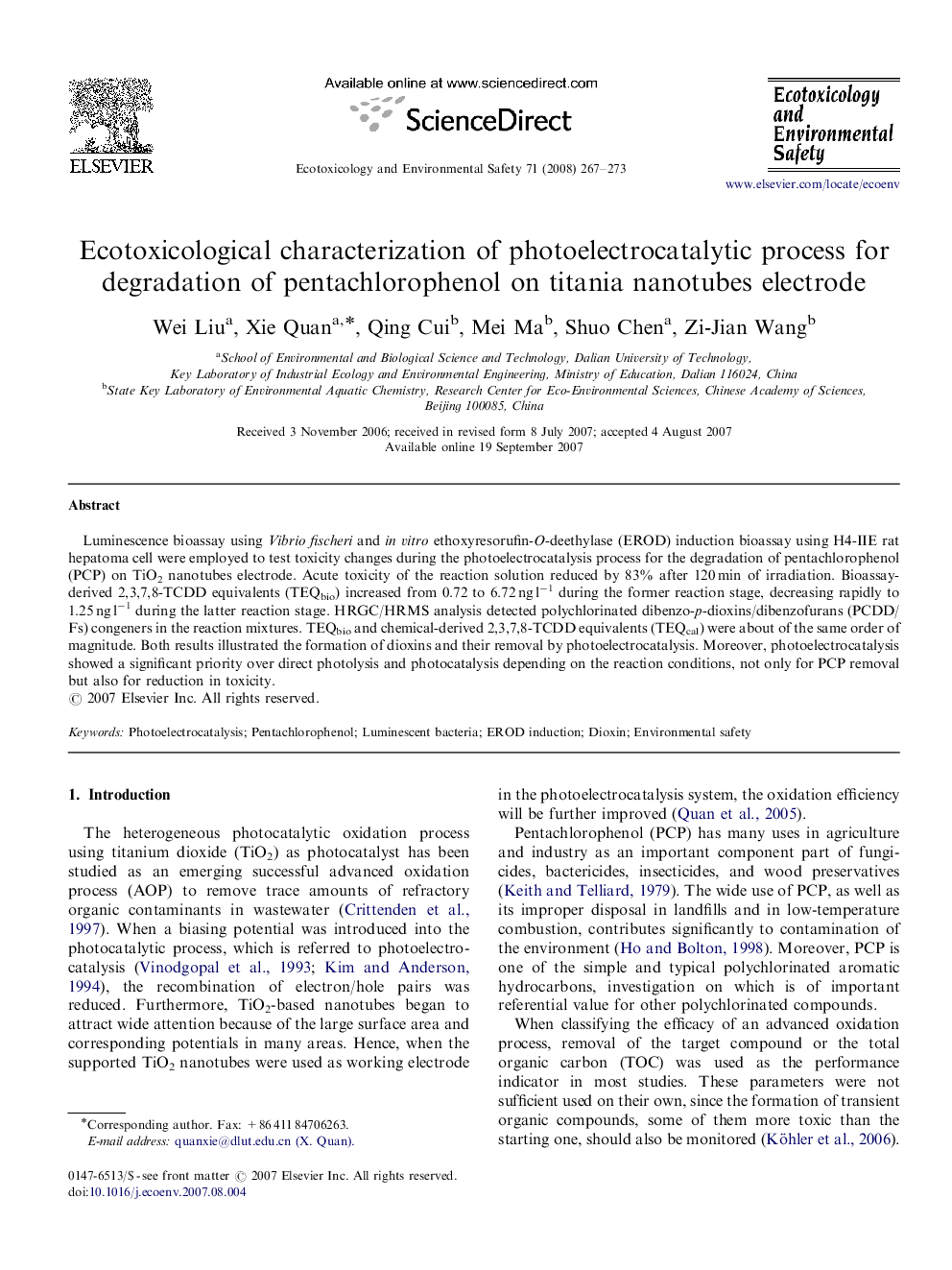| کد مقاله | کد نشریه | سال انتشار | مقاله انگلیسی | نسخه تمام متن |
|---|---|---|---|---|
| 4421879 | 1308524 | 2008 | 7 صفحه PDF | دانلود رایگان |

Luminescence bioassay using Vibrio fischeri and in vitro ethoxyresorufin-O-deethylase (EROD) induction bioassay using H4-IIE rat hepatoma cell were employed to test toxicity changes during the photoelectrocatalysis process for the degradation of pentachlorophenol (PCP) on TiO2 nanotubes electrode. Acute toxicity of the reaction solution reduced by 83% after 120 min of irradiation. Bioassay-derived 2,3,7,8-TCDD equivalents (TEQbio) increased from 0.72 to 6.72 ng l−1 during the former reaction stage, decreasing rapidly to 1.25 ng l−1 during the latter reaction stage. HRGC/HRMS analysis detected polychlorinated dibenzo-p-dioxins/dibenzofurans (PCDD/Fs) congeners in the reaction mixtures. TEQbio and chemical-derived 2,3,7,8-TCDD equivalents (TEQcal) were about of the same order of magnitude. Both results illustrated the formation of dioxins and their removal by photoelectrocatalysis. Moreover, photoelectrocatalysis showed a significant priority over direct photolysis and photocatalysis depending on the reaction conditions, not only for PCP removal but also for reduction in toxicity.
Journal: Ecotoxicology and Environmental Safety - Volume 71, Issue 1, September 2008, Pages 267–273